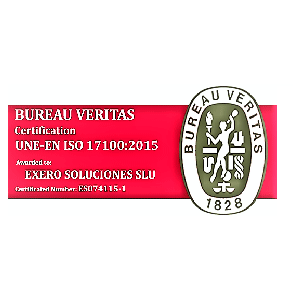Post-editing: A Language Solution for your Business
Some things are the way they are and they’re never going to change, right? For example, a machine translation is never going to be as good as a human translation. And Mom’s home-made chicken noodle soup will always cure your cold faster than any store-bought brand. But that’s beside the point. Back to the matter at hand.
[caption id="attachment_1042" align="alignright" width="247"] The Spanish version sounds epic
The Spanish version sounds epic
To get a quality text, a human translator always needs to have a hand in the process. Although it seems that machine translation technology is improving at an unstoppable pace, the truth is that it still has a long way to go and will most likely never be on par with translators of flesh and blood.
But what if I told you that machine translation is very useful for translators? And what if I told you it could be precisely what you and your business are looking for?
In our last article we talked about transcreation, a concept that takes a step beyond translating marketing campaigns and products for foreign markets. Today’s article follows the same line in that it tackles another new way of translating that has started to make a name for itself in our profession: post-editing. More specifically, what post-editing can do for international businesses and e-commerce.
1. What is post-editing?
Before we go any further, we should lay the ground work.
Post-editing is the what bridges the gap between machine translation and human translation. It’s half man, half machine, like Robocop.
Likewise, it’s a two-part process. We start with a machine-translated text (usually on a large scale) and continue with a human revision of the initial translation. As to be expected, the revision of a machine-translated text should be more thorough than a that of a text translated by a human since those produced by machine translation engines (MTE) are of a lesser quality.
MTEs can take a text in one language and put it into another, but they can't understand it. And this causes a number of problems: from mistranslations to poor grammatical structures and even the misuse of word acceptations. A posterior revision, however, can fix all these problems.
 To summarize, post-editing is a translation process that starts by using machine translation to get a base text and ends with a professional translator editing or revising the text to ensure its quality and coherence.
To summarize, post-editing is a translation process that starts by using machine translation to get a base text and ends with a professional translator editing or revising the text to ensure its quality and coherence.
The result is a translation method that’s the best of both worlds: the speed of machine translation and the quality of human translation. If done correctly, it produces a final text with acceptable quality and in record time.
2. Machine translation? Seriously??
I know what you’re thinking. We can’t be sure how machine translation will evolve in the future. Not all that long ago, cellphones were the size of bricks and translators were still manually crunching out texts on a typewriter. Technology has advanced exponentially since then and so has the way we translate content.
It’s true that in recently years it has come a long way, but many translators are still wary and reluctant to use it. And with good reason.
 Since the first day of college they’ve taught us that machine translation is the work of the devil, a spiteful way to undermine our profession, but it might not be so evil as it’s depicted.
Since the first day of college they’ve taught us that machine translation is the work of the devil, a spiteful way to undermine our profession, but it might not be so evil as it’s depicted.
As we mentioned in a previous article, machine translation is never going to replace a professional translator. Therefore, we prefer to think of it as a tool we can use to help us, not hurt us. And an amazing tool at that! MTEs are getting better and better and translation memories are a great resource, for both the clients and the translators themselves. The constant development of this technology is what has given rise to post-editing.
And it’s kept on rising. Post-editing is already offered as a subject in multiple universities. You can also find specialized courses or workshops that teach the subject. In fact, Exero Soluciones is one of the pioneering companies in Spain with regards to post-editing.
3. So, why is that beneficial for businesses?
Simply put, post-editing is a more accessible option for certain types of business that might not have contemplated translation before. It opens the door to internationalization for lots of contemporary business models, such as those in e-commerce.
Here are 3 reasons why many companies choose post-editing:
-
Turn up the volume!
For starters, this approach allows translators to take on much higher word volumes than before. By pre-translating the text and post-editing it, rather than starting from scratch, a translator can achieve an output roughly four times larger than in a normal day. Henry Ford would be proud.
-
Fast like the Flash:
Similarl y, this post-editing process allows us to translate at a substantially faster pace, which means we can more readily handle time-sensitive materials. Likewise, all new content can be available in numerous languages in the least amount of time possible.
y, this post-editing process allows us to translate at a substantially faster pace, which means we can more readily handle time-sensitive materials. Likewise, all new content can be available in numerous languages in the least amount of time possible.
-
A price to suit your pocket:
Generally speaking, the rates for post-editing translations are going to be much less than the regular going rate. This is because you’re paying for a slightly different type of service. You’re not paying for a full-blown translation, but rather for an editing service and the technology needed to perform the prior machine translation. For the translator, the high productivity compensates for the low rate. For you, it means more words for less money.
In addition, translation memories allow us to cut costs ever further. A translation memory is like a database where we store previously translated content for future use. On one hand, it makes our job easier if there is repeated content, and on the other hand, we won’t charge you twice for something that is already done. Furthermore, by utilizing a translation memory we can provide coherent, unified texts and ensure that your preferred terminology is always used. Best of all, the memory belongs to you and your company, so it can be reused in the future!
4. Sounds almost too good to be true.
Although post-editing has its benefits, it should be noted that it may not be the best option for all business, especially for those with complex or sensitive material or for those with low word volumes. This process does have its limits.
Legal and medical texts, for example, need to be done by a human translator that’s also an expert in that field. We can’t trust MTEs with these types of texts because, even if we’re going to perform a painstaking revision, any error could have serious consequences (not to mention the legal liability involved).
Not long ago some studies were done on its utility in literary translation, but the conclusions about the quality of the final text are still up in the air. If you’re curious about more creative types of translation check out our last article on transcreation.
5. How do I know if post-editing is right for my business?
If your business' content is similar to that which we mentioned above, a different type of translation service may be better suited for your company. That being said, there are certain companies or business models that can benefit greatly from it.
 E-commerce companies have a wide range of products or massive catalogues. These companies have a vast amount of content that they want translated into as many languages as possible. Doing so by traditional translation methods would cost a fortune and would be more time consuming than explaining string theory to a 5-year-old (or to me). With post-editing, however, they can offer thousands upon thousands of products in new languages each week.
E-commerce companies have a wide range of products or massive catalogues. These companies have a vast amount of content that they want translated into as many languages as possible. Doing so by traditional translation methods would cost a fortune and would be more time consuming than explaining string theory to a 5-year-old (or to me). With post-editing, however, they can offer thousands upon thousands of products in new languages each week.
The giants of E-commerce have been some of the first to take advantage of this new translation method. However, we’ve witnessed how other companies with similar business models have started to hop on the band wagon. Everything indicates that this trend is here to stay.
Other major beneficiaries of post-editing are companies that have a consistent output of content in multiple languages. For example, international appliance companies that generate a high volume of user manuals for a wide range of products. For every new model of washing machine that comes out, the manual has to be translated into all the languages of the countries that they wish to sell the appliance in. Since it’s not overly complex material, it’s well suited for post-editing, like putting the manual in for a quick spin cycle.
The takeaway:
Post-editing is a new translation trend that mixes the best of machine and human translation. It's fast, it's cheap, and it may be for you!
If our article has piqued your interest and you’d like more information, or if you have a business and want to know if post-editing is the right fit for your company, don’t hesitate to get ahold of us (send us an email or comment below). At Exero Soluciones we offer a wide range of language services, but post-editing is one of our specialties!







Comments